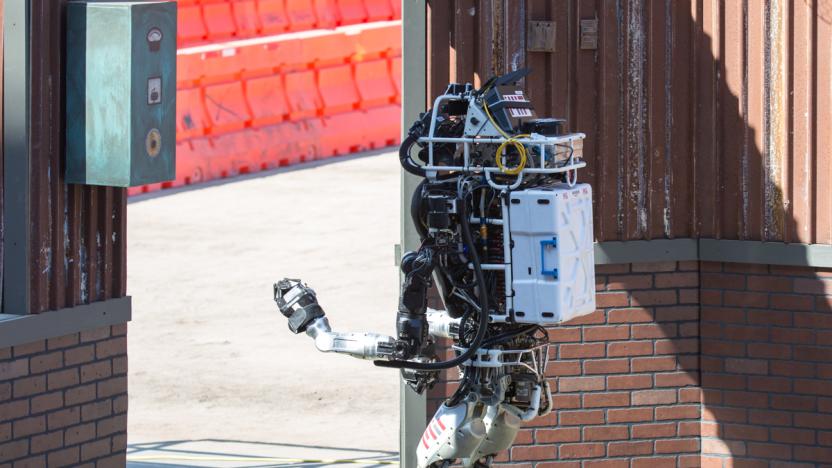DarpaDRC
Latest

The bots that bucked the humanoid trend at DARPA's challenge
#fivemin-widget-blogsmith-image-897542{display:none;} .cke_show_borders #fivemin-widget-blogsmith-image-897542, #postcontentcontainer #fivemin-widget-blogsmith-image-897542{width:570px;display:block;} try{document.getElementById("fivemin-widget-blogsmith-image-897542").style.display="none";}catch(e){} Humanoids are supposed to be best suited for a world that's engineered for humans. They can climb stairs, open doors and drive cars. At DARPA Robotics Challenge, most of the participating humanoids succeeded in completing those tasks, but when it came to walking, they were clumsier than the species they were designed to emulate. Getting a machine to put one foot in front of the other has been a priority for roboticists for decades. Bipedal locomotion would presumably make it easier for robots to navigate a man-made world and perhaps make them more relatable. But the movement requires sophisticated control software and advanced AI technology that isn't quite ready yet.

The machines that rose to DARPA's robotics challenge
The robot apocalypse has been postponed. At DARPA Robotics Challenge in California, where the world's best and brightest robots came to compete, the machines were far from invincible. They moved at a glacial pace, stumbled and slammed to the ground and lay there motionless until their teams of humans came with a rig to pick them up. But their falls and flaws revealed how vulnerable they are, and actually made them seem more human in the process. These machines exhibited grit, intelligence and dexterity that could potentially make them stellar first-responders in disaster situations in the near future.
